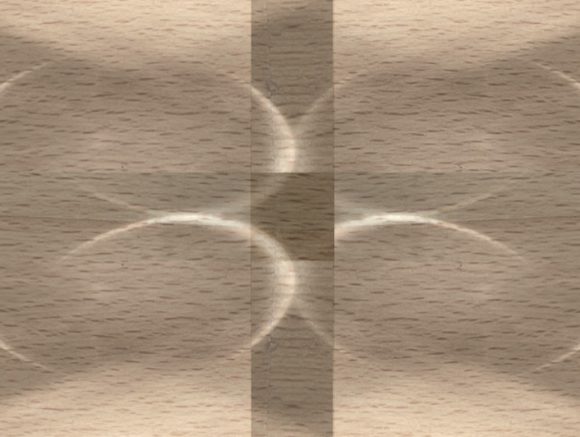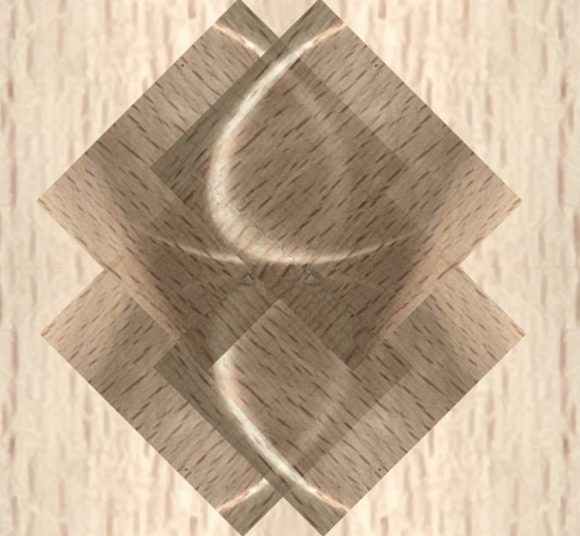Imagine you sit model for a painting. When it is finished, you look at it with surprise and admiration: the painter is a true artist, and this is his masterpiece. It brings out something about you, your true personality; it shows things of which you were only dimly aware yourself. To use an old expression: it reflects your soul.
Now imagine further that the painter tells you an astonishing thing: he possesses a certain magic (or some futuristic technology, if you like) which brings the painting to life. It’s going to move through time with you. It will change and, at any later point in time, it will still reflect your soul, namely: as it will be then (when, presumably, you have changed, too, and developed).

And there you have it. The picture of Dorian Gray is not a picture. It’s a mirror.
1. In my post on the symbolic function of mirrors I have said that mirrors can show us something about ourselves, as others would see it. That is what the picture of Dorian Gray does, although with the additional feature that it does so, not just as a snapshot, at a single point in time, but continuously as time moves on — and as Dorian’s personality changes.
That imaginative feature is just a narrative device; devices of that sort sometimes work by magic (e.g. in fairy tales), by some ‘yet undiscovered’ technology (e.g. in science fiction), or they are simply assumed without further explanation, as in Wilde’s novella. Whatever type of narrative device is at work, however, it always has the function to indicate to us, the reader, that we may want to move our interpretive attention from the object level to the symbolic level: we should stop asking ourselves what happens (in the way we might ask that about the real world), and start meditating about what it means. When a story points us to the symbolic level, and in addition we become fascinated or otherwise emotionally engaged, we are invariably about to learn something about ourselves.
It is the spectator, and not life, that art really mirrors.
Oscar Wilde, Preface to The Picture of Dorian Gray
Whenever a story invokes mirrors, that is a surefire sign that it wants to nudge us towards the symbolic level. It must do that, of course, in a carefully measured way. If it happens too subtly, readers might miss it (and then most likely just lose interest and put the book away); if it happens too bluntly, readers will see through it and balk at the presumtiveness of the narrative. We want the story to lead our souls, of course, but we do not want to be pulled and pushed around. That is more important than it may, at first glance, seem: we need to exercise our own free will in deciding whether we want to come along to the symbolic level or not. If we don’t do it of our own free will, we’re not going to learn and accept, but rather feel manipulated. (There are stories which try to trick us into feelings and views, and mostly readers, once they notice, turn away from them.)
Now Wilde’s story, of course, does it exactly right, and that is certainly a factor in its ongoing appeal. As the narrative unfolds, we gradually come to realize the mirror-like function of the painting. We easily understand what it is that the painting says (to Dorian), and we understand how the choices of the protagonist go in parallel with his refusal to look into that mirror, pushing him into the downward spiral of his eventual fate.
2. The distinction between the object level and the symbolic level (in a story) corresponds roughly to a distinction Jung makes when interpreting personal fantasies and dreams: he there distinguishes between an object level and a subject level (e.g. at GW VII, §130 or GW VIII, §§509-510).
For instance, you may have a nightmare in which your maths teacher from your school years appears and forces you to make boring calculations. On the object level, this is about your former teacher, and perhaps it just activates a memory of unpleasant situations in which you found yourself frequently at that time. On the subject level, however, the teacher and the situation may appear symbolically, pointing to a part of yourself. Moving from the object level to the subject level means to stop treating the dream as if it talks about the external world or other people (such as your teacher), and to begin treating the dream as if it talks about your inner world, parts of yourself, so to speak, which merely appear personalized in the shape of other people and situations from the external world.
3. With stories, the situation is more complex than with dreams; and therefore, the distinction between object and symbolic level here has an extra complication.
A story, once written and published, is read by many people. Now at some point the story may move from the object level to the symbolic level. (In our example, that is where the picture of Dorian Gray and its strange qualities come into play.) But that may speak only to some of the readers, and not to others. Consider: a slice of the audience will simply miss the shift to the symbolic level; another slice won’t feel any fascination or emotional pull, and ignore it; and yet another slice might go along for some time, but then grow cold. Only the remaining portion of the audience will really follow the narrative to the symbolic level and let it do its transformative work there.
In contrast, a dream is always a personal thing: there is an audience precisely of one. The dreamer can either make the move to an understanding on the subject level or not, and depending on that, the dream is either successful or not. For a story, since the audience is broader than just one person, the symbols have to target a whole range of different people. In other words: the story cannot tailor its incentive to move to the symbolic level to just one person, as the dream does (making it easier to be effective). The story has a much more difficult job to do. That is why there are so few really good stories (of which Wilde’s is one), and comparatively many really effective personal dreams, when it comes to getting us to the symbolic of subjective level, respectively.
4. The picture of Dorian Gray, I have suggested, is a mirror of the soul.
We are told so in no uncertain terms. “Was there some subtle affinity between the chemical atoms, that shaped themselves into form and colour on the canvas, and the soul that was within him? Could it be that what that soul thought, they realised? — that what it dreamed, they made true? […] here was a visible symbol of the degradation of sin. Here was an ever-present sign of the ruin men brought upon their souls.” (The Picture of Dorian Gray, 77) Before committing all those awful deeds which make the portrait ugly, Dorian sits in front of it “morning after morning […], wondering at its beauty, almost enamoured of it” (84); subsequently, he hides it in the attic, afraid of what he would see: “His own soul was looking out at him from the canvas and calling him to judgment” (93). And that is, of course, the typical difference between a young soul’s fascination with its own beauty and an aging soul’s denial towards the marks of its past, which each of them find in their respective mirror images.
The picture is a mirror of the soul. What makes it a mirror of the soul is the fact that it is a masterpiece painting, by an exceptional artist, who felt a deep connection with the subject and was also willing to put more of himself into it than even he felt was appropriate (24, 89). In other words: the painting was occasioned by a uniquely insightful and deep look into that soul, and an unusually competent translator who then transformed it into a visual artifact. What makes the artifact a mirror of the soul, rather than a fixed snapshot (which, as a painting, it would normally be), is the fact that it changes over time, tracking developments faithfully just as they appear, and thus reflecting, at any given time, the current image of the soul as it then is. Both these ingredients needed to come together to produce its character as a mirror of the soul. It is the kind of thing, of course, that happens only in fiction (in case you were doubtful).
As I said: when mirrors appear in a story, they invariably lead us to the symbolic level.




[…] Either way, the appearance of mirrors is a surefire sign that we move onto a symbolic level. Thus the Spikher story can be taken as a deeper account (perhaps a psychological unpacking) of the […]
[…] (This is explored in doppelgänger novels such as E.T.A. Hoffmann’s Die Elixiere des Teufels, or Umberto Eco’s L’isola del giorno prima. An alternative, very imaginative way of doing the same trick is to present the dark aspect, not as another person, but as a picture.) […]